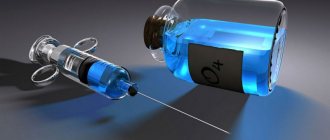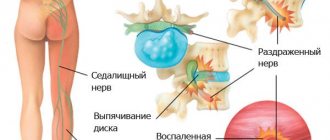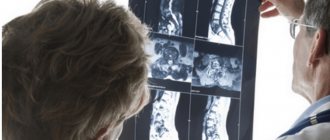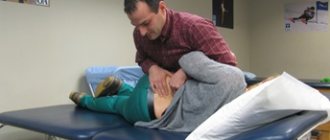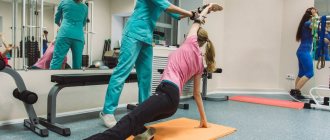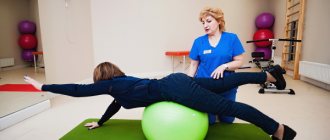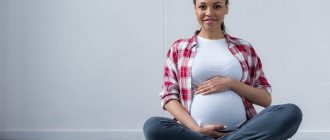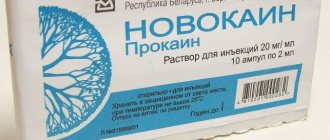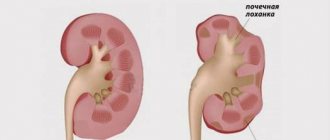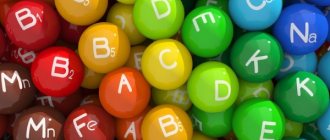Instead of a preface, or what is kinesitherapy
Kinesitherapy (from the Greek words “kinesis” - movement and “therapy” - treatment) is the treatment of pain syndromes with special decompression movements on a therapeutic MTB simulator (Bubnovsky multifunctional simulator) without painkillers (medicines).
Despite the fact that certain physical exercises were used as a remedy back in Ancient Greece and Ancient Rome, the term “kinesitherapy” was forgotten for many centuries. In modern medical literature, this term appeared relatively recently, less than three decades ago. This term was revived, so to speak, by Professor, Doctor of Medical Sciences Sergei Mikhailovich Bubnovsky, who proposed a fundamentally new system for treating many diseases, getting rid of pain and restoring ability to work without drugs and surgeries. The uniqueness of Bubnovsky’s system is confirmed by scientific activity and the interest shown by millions of readers in his books, as well as a number of patents and certificates. Bubnovsky’s healing system has received many awards and letters of gratitude, but the best proof of the effectiveness of kinesitherapy is more than 1.5 million successful recovery stories of patients with various diagnoses.
Hippocrates used therapeutic movements in his practice. Eastern medicine includes practices such as yoga and qigong, which also use various movements and postures to maintain and restore health. Currently, there are standard treatment and rehabilitation methods, which include movements with loads, therapeutic exercises and physical therapy (physical therapy). But yoga and qigong help only a healthy person in self-improvement, and standard exercise therapy techniques, unfortunately, do not allow their use as full-fledged therapeutic agents for degenerative diseases of the musculoskeletal system. Thus, at present, only kinesitherapy can really restore the sick body of an unathletic person, who also has a number of concomitant diseases and bad habits.
Today, modern kinesitherapy using the method of S. M. Bubnovsky is the most popular method in Russia and abroad for the non-surgical and drug-free treatment of spinal osteochondrosis with herniated intervertebral disc (IVD), rehabilitation after injuries and operations, as well as the prevention of chronic disability.
Contraindications to massage
The main contraindications to the use of any massage techniques are:
- Development of a herniated disc with the risk of compression of the spinal canal.
- Infectious processes or inflammation of soft tissues.
- Tumor formation.
- Serious damage to the nervous system.
- Postoperative period.
- Exacerbation of any chronic pathology.
- Open skin lesions, rashes, fungus, abrasions or eczema.
- Disruption of normal blood flow due to varicose veins or vascular pathologies.
- History of heart attack or stroke.
- Blood diseases.
- Fever or cold.
In such cases, external influences can adversely affect the course of the pathology and cause complications. Before prescribing a massage, the doctor checks whether there are any contraindications.
The main differences between kinesitherapy and conventional therapeutic approaches
In traditional medicine, for the treatment of various diseases of the spine and joints (osteochondrosis, arthrosis, intervertebral disc herniation, osteoporosis) and injuries of the musculoskeletal system, patients are prescribed pharmaceuticals (tablets, injections, ointments), surgical operations, physiotherapeutic procedures, acupuncture, etc. .
Despite the significant differences between these methods, they have one common drawback: they all treat a passive patient who is excluded from the ability to move and restore himself physically. As a result, the pain subsides, but after stopping the drugs, the patient’s muscles atrophy, which even leads to diseases of the cardiovascular system. In addition, it is well known that all pharmaceutical drugs that are used to treat these diseases have many negative side effects, and long-term use of these drugs has a destructive effect on the health of the body as a whole. Disuse of skeletal muscles, which leads to deterioration of all organs and systems, is the gold standard of rehabilitation medicine. In addition, from a physiological point of view, the main cause of pain syndromes is the lack of skeletal muscle function. Treatment of skeletal muscles using modern kinesitherapy methods provides a stable and long-lasting effect.
What is therapeutic spinal massage and how is it performed?
Therapeutic spinal massage can only be performed by a specialized physiotherapist who thoroughly knows human anatomy and physiology. Performing such a massage on your own will do more harm than good.
In most cases, patients are referred for therapeutic spinal massage. An appropriate referral from a physician, as well as specific knowledge of anatomy, allows the therapist to apply appropriate techniques depending on the type of disease the patient is suffering from. Patients benefit from massage therapy when the ligaments or muscles attached to the spine stop performing their functions. In most cases, patients complain of pain, discomfort, lack of stability and differences in the functioning of the muscles on both sides of the spine.
Treatment should begin with an interview. The massage therapist asks where the back hurts the most, for the first time, if not, whether there were bruises before, whether the patient can lie on his stomach (if there is difficulty breathing, you can sit in a special chair). Then he lubricates his back with a lubricant (olive oil, Vaseline, talc) to avoid mechanical damage. Sometimes natural preparations are also used to support treatment - gels, ointments, creams, emulsions with anti-inflammatory, analgesic and blood vessel sealing properties.
Therapeutic massage does not have to be pleasant or unpleasant. In both cases it would be ineffective. It is best if it oscillates on the verge of pleasant pain, that is, one that allows you to relax. Performed using classic massage techniques (from weakest to strongest). The following techniques are used in therapeutic massage: stroking, rubbing, kneading, patting and vibration.
Bubnovsky exercises for hernia of the lumbar spine
The set of exercises is very simple to do independently at home. By performing training, you can eliminate pain, relieve muscle tension, stretch the spinal column, and speed up blood circulation in the affected area of the back. But to consolidate the result, it is important to complete the entire course using Dr. Bubnovsky’s simulator and be under the supervision of a doctor.
How to do the exercises:
(1) - Cat/Cow
Take a position on all fours. Rest your elbows and knees on the floor. Relax your muscles as much as possible. Take a deep breath and slowly arch your back. Then, slowly exhale and bend your back. Return to starting position. Perform 15-20 repetitions.
If the pain intensifies during movements, then temporarily do not perform this stage of the workout.
(2) - Gluteal bridge
Take a lying position on your back, stretch your arms along your body. Take a deep breath. Exhaling slowly, carefully lift your pelvis off the floor, resting on your feet and shoulders. Try to lift to the maximum height. As you inhale, lower your pelvis. It is recommended to perform at least 15-20 repetitions and then pause.
Gluteal Bridge
(3) — Complex for keeping the body tense
Starting position on your back, arms along your body. Raise your legs up, clasp your knees with your hands. Slowly raise your body. Press your chin to your chest. Then, release your knees without changing position and fix the position for a few seconds. It is not advisable to allow overvoltage. Repeat the exercise until you feel slightly tired.
(4) — Bend forward to hold the body from a position on all fours
Take a position on all fours. Move your body straight, that is, pull it forward, trying not to bend your arms at the elbow joint. At the same time, the shoulders move forward, the knees and palms remain in place. It is necessary to move forward until there is comfortable tension in the lower back. Hold the position for a few seconds and return to the starting position. Repeat the movement 15-20 times.
(5) - Scissors
Exercise "Scissors". Take a horizontal position on your back, arms at your sides, bend your knees slightly. Start with your legs slowly, without making sudden movements. Breathing should be uniform.
Exercise "Scissors"
(6) - Bicycle
Oblique crunches (or “Bicycle” exercise). Lie on your back. Place the left upper limb under the back of the head. Slowly move your right leg, bending it at the knee, to touch the elbow of your left hand. In the same direction, return to the original position. Perform 15 approaches on each side.
Exercise "Bicycle"
(7) - Walking on your buttocks
Take a sitting position on the floor. Place your hands behind the back of your head. Smoothly lift the left and right buttocks in turn, thus moving forward. Move backwards in the same way and take the starting position.
Exercises for pain with a hernia in the cervical spine
Therapeutic training can help restore circulatory blood flow through the vertebral arteries to the brain. You can have an impact on the back muscles and the vascular system by doing pull-ups.
(1) — Working with rubber
You need to sit on a chair. Perform traction movements using an expander (an exercise machine made of elastic rubber). The row is performed with the arms from side to side, that is, by stretching the machine as much as possible.
(2) - Knee push-ups
Now perform push-ups with emphasis on the knee joint. The torso should remain straight and in contact with the entire plane of the floor. Untrained people do 5 push-ups and a total of 10 approaches with a break of 3 minutes.
Exercises with expander and dumbbells
(1) — Sawing wood
Exercise “sawing wood” with emphasis on the knee joint. The expander is attached down the wall. Place your legs, knee and shin on a high bench, lean your hand against the wall. With the second hand, make movements towards yourself, away from you. This exercise uses the muscles of the cervical spine. Instead of an expander, you can use a dumbbell, lifting it from the floor and lowering it.
(2) - Pullover
Exercise “pullover”. To perform the exercise, you need to lie on a horizontal bench with your back along the bench, put your feet on the floor, and place your head as close to the edge of the bench as possible. At the starting point, the dumbbell is held with outstretched arms above the chest. As you inhale, lower the dumbbell behind your head without bending your arms until your arms hang below the level of the bench. Then, as you exhale, raise the dumbbell to the starting point.
(3) - Straightening the arm from behind the head
You need to sit on a bench, take one dumbbell in your hands, raise it above your head with your hand, bend your arm at the elbow and put the dumbbell behind your head from behind, lift it and put it back again. Repeat the exercise 15 times with each hand. All actions are performed slowly.
Reviews
You can find many positive reviews about Bubnovsky’s technique. Over the years, his system has helped people with various problems and diseases of the back and lower back. Almost all patients who have undergone a course of therapy at Dr. Bubnovsky’s centers are satisfied with the therapeutic effect. Many of them were able to improve their quality of life, get rid of long-term back and lower back pain, and overcome the signs of many chronic diseases.
Even in severe cases, when it was impossible to completely cure the disease, patients achieved an improvement in their health, temporarily reducing pain and signs of inflammation.
Important Exercises for Blood Circulation
Therapeutic exercises from this group help improve blood flow in the pulmonary and systemic circulation, the functioning of the heart muscle, and accelerate the absorption of nutrients into the bone and cartilage tissue of the spine.
Exercise #1 - Squats
Place your feet wider than your shoulders, point your toes to the sides, keep your back straight, stretch your arms forward.
Inhale and squat at an angle of 90 degrees, exhaling forcefully, straighten your legs. This must be repeated 10 times. It is advisable to learn how to perform 4 approaches in 30 days, and 10 approaches in six months.
During the exercise, you must monitor your pulse; a heart rate of no more than 140 beats per minute is acceptable. Check your heart rate zones using the Karvonen formula or mHR (220 - age.)
If after performing the exercise there is pain in the lower extremities, you can take a contrast shower or rub the muscles with a cold wet towel.
This exercise is not recommended for those with arthrosis of the knee joint.
Exercise #2 - Advanced Glute Bridge
Lie on your back, bend your legs and place them on a bench or chair.
Support your head with your hands or you can stretch it along your body. Take a breath.
As you exhale, slowly raise your upper back and reach your elbows towards your knees. It will be enough to lift your shoulder blades off the floor, retracting the muscles of the anterior abdominal wall.
Repeat 10 times.
To stabilize your heartbeat, it is advisable to lie down quietly.
